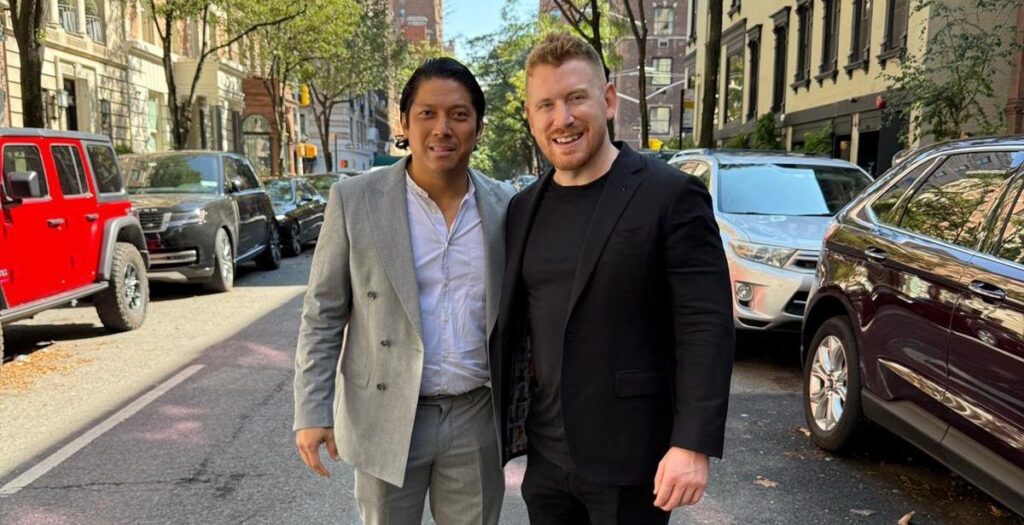by Silvia Nani,
DesignMiami. In the collectors’ lounge, an enveloping shape in metal: solids and voids that design a “skin”, between unsettling luminosities and the reassuring warmth of wood. It is a futuristic dining room that Zaha Hadid has created for “Revolution”, 30 temporary living spaces based on the idea of the real estate developer Robbie Antonio and curated by world-famous architects, designers, artists (Hadid the first, but Ron Arad, Daniel Libeskind, Lenny Kravitz).
There is all the new Miami in a project that holistically combines chosen creative areas, symbolic places where we spend our lives and their reinterpretation in a contemporary key. Recovered historic buildings, new architectures and others to come, interiors that translate today’s needs without forgetting their roots, art that becomes design and vice versa: all this is today a city that is now far from the stereotypes of certain films, full of palm trees, underworld and idle “billionaires”. Current Miami is a changing scenario, which culminates in the first week of December when Art Basel and Design Miami are concentrated, and the ferment of projects (and products) finally becomes tangible.
Forbidden to be deceived by the tensile structure that hosts it: Design Miami is the most important collectible furniture fair in the world. Exactly ten years of life, just under 40 galleries from all over the globe, among the buyers there are museum directors but also the jet-set. If Sylvester Stallone was ready to pose on a tubular and silicone seat by the Aranda/Lasch studio (New York) for the Gallery All (Chinese), the curators treat the pieces without being noticed: “I sold three pieces by Gio Ponti at the opening” , says Rossella Colombari of the homonymous Milanese gallery specializing in rare pieces from the 1950s. Here, nothing happens by chance: “We work with established clients. Our standard, thanks to the selection of the organizing committee, is very high, so even the occasional buyer is protected ”, she explains, “Collectors from all over America and new riches come to Miami in search of a cultural identity: for them, an impulse purchase is worthwhile. It is a unique scenario, unthinkable in Europe”. The great masters (from Prouvé to Sarfatti, to Carlo Mollino) but above all “artfully done” design (such as the furnishings by the Campana brothers inspired by the colored leather clothes of the Brazilian bandits of over a century ago) and the opposite, by artists of everyday objects: here the furnishings cross over various territories, cultural but also geographical (from South Africa to Korea).
Steps away, Art Basel, the epicenter, displays masterpieces of modern and contemporary art in museum-like density and draws an audience that then returns to the series of events on Collins Avenue, the thoroughfare that runs through Miami Beach behind the beach . The scenario this time is the 1940s hotels, which are reopening one after the other after complete renovations of the interiors. Last, inaugurated during Design Miami, the Faena Hotel (formerly Saxony Hotel from 1947), part of the project of an entire “district of the arts”, vision of the Argentine real estate developer Alan Faena: “It will be a complete experience of Miami: hotels and apartments from the warm interiors that recall the city’s golden age, a forum that will host projects from various disciplines, installations and performances, a bazaar where art will be on sale, the headquarters of a cultural association and some residential buildings,” he explains. Architectures by Rem Kolhaas and Norman Foster (some opening in 2016), hotel furnishings by director Baz Luhrmann who dosed 1950s furniture, colors and decorations in a kitsch-sophisticated style with consummate skill. Outside, on the beach, three installations link the hotel to Art Basel.
A few blocks away, the Nautilus, another recently reopened historic hotel, houses a permanent gallery of contemporary art canvases amidst elegant 1940s velvet lounges, a spectacular bar and tropical plants. Creativity that joins and complements each other, whether it’s the Pérez Art Museum (awarded this year for green architecture), Wynwood (neighborhood redeveloped with street art, abuzz with galleries and creative shops) or Craig’s private office-gallery Robins, founder of Design Miami, open to the public as a museum. Ocean and palm trees are still the ones from the movies, but the “billionaires” have become cultured. In the Miami of design.
Related Links: About Robbie Antonio , Contact




No comment yet, add your voice below!